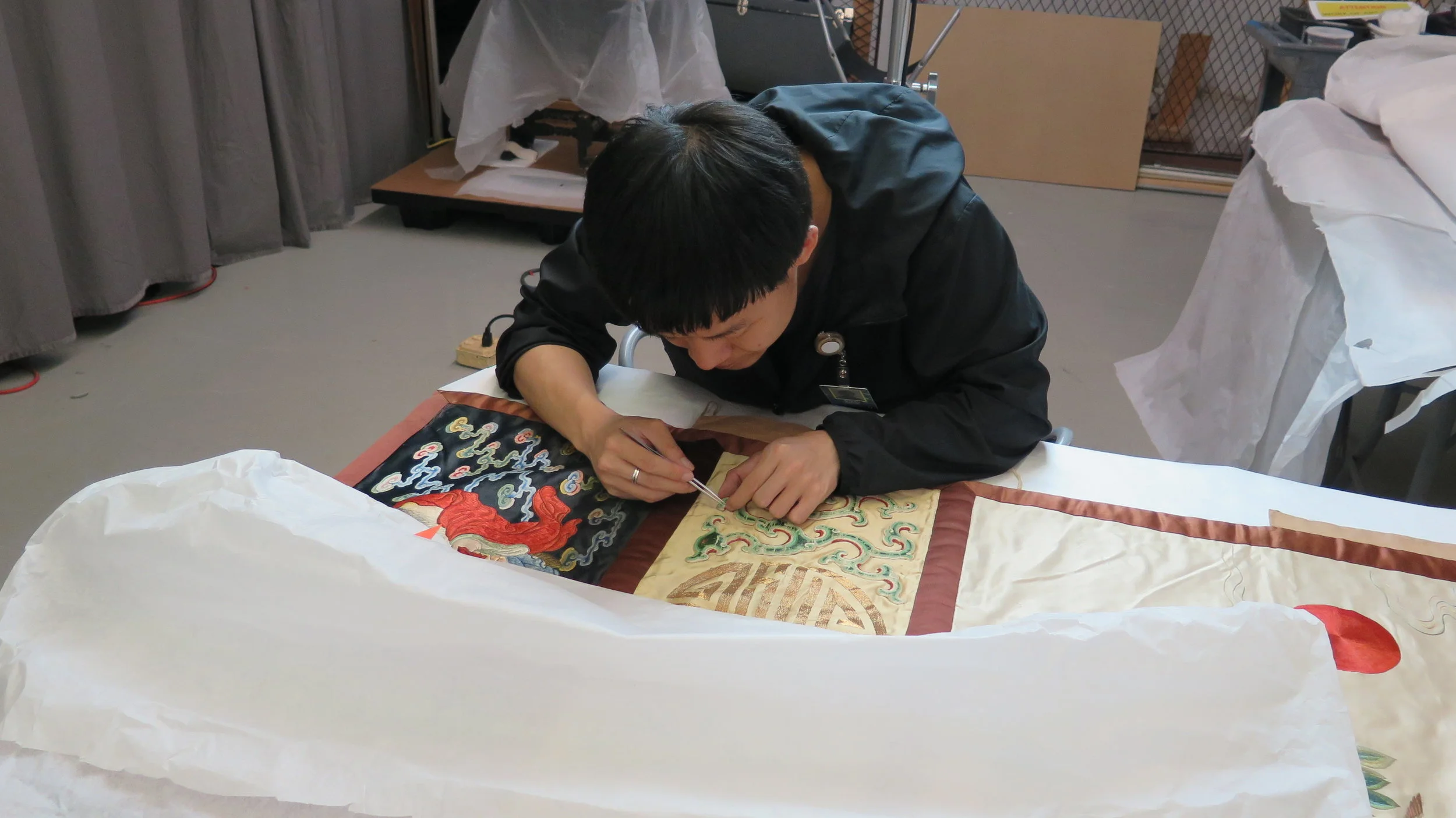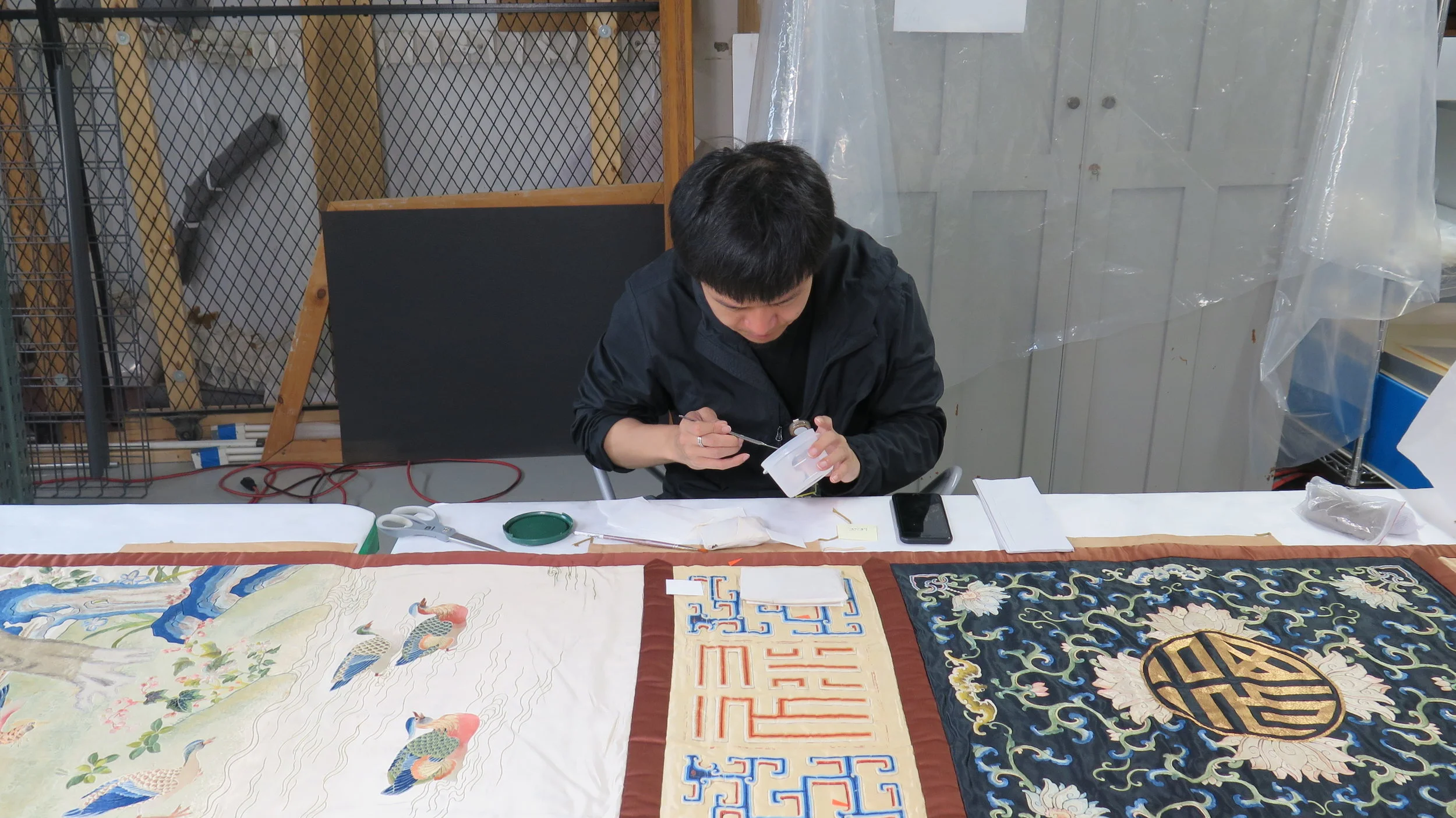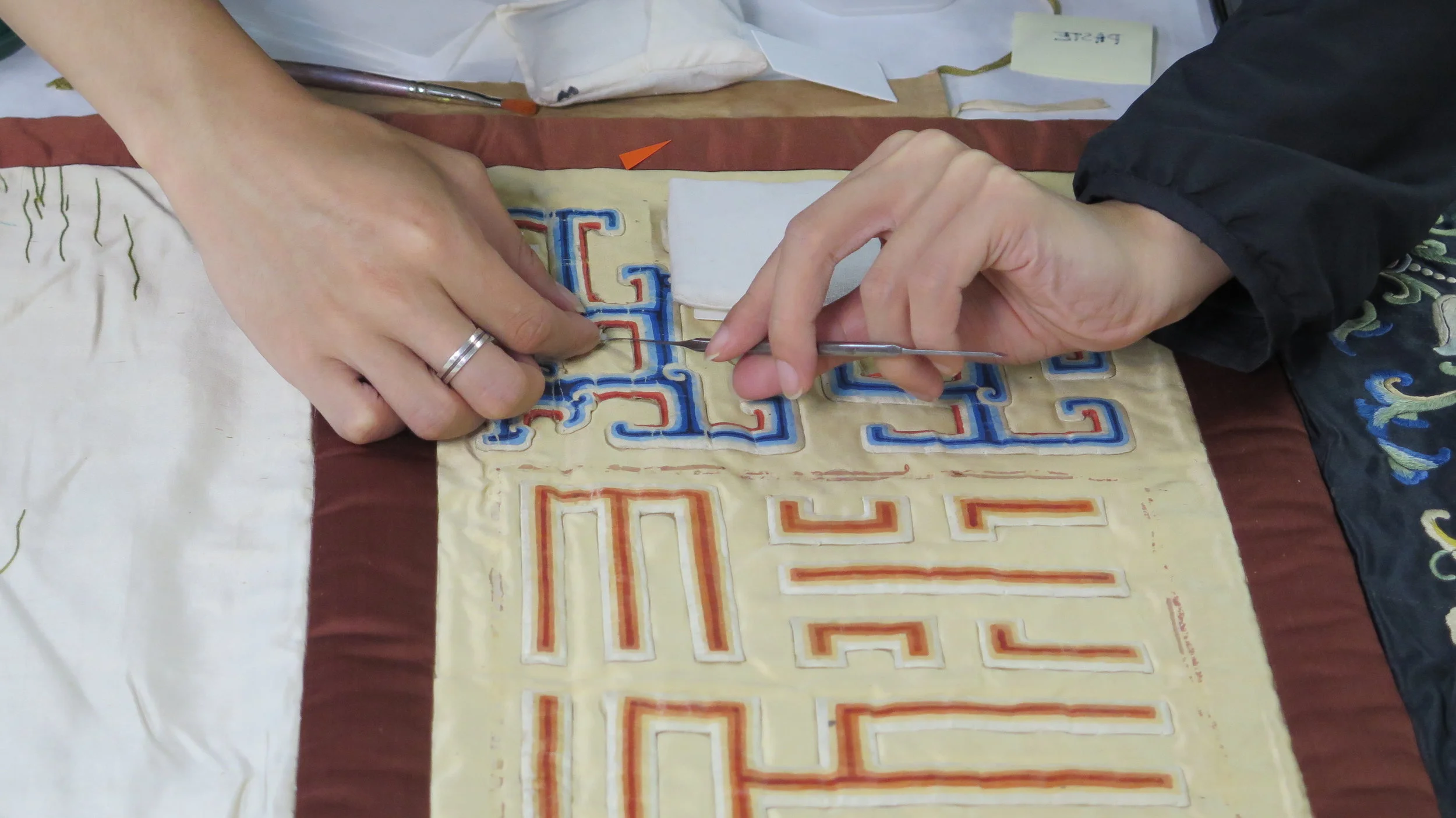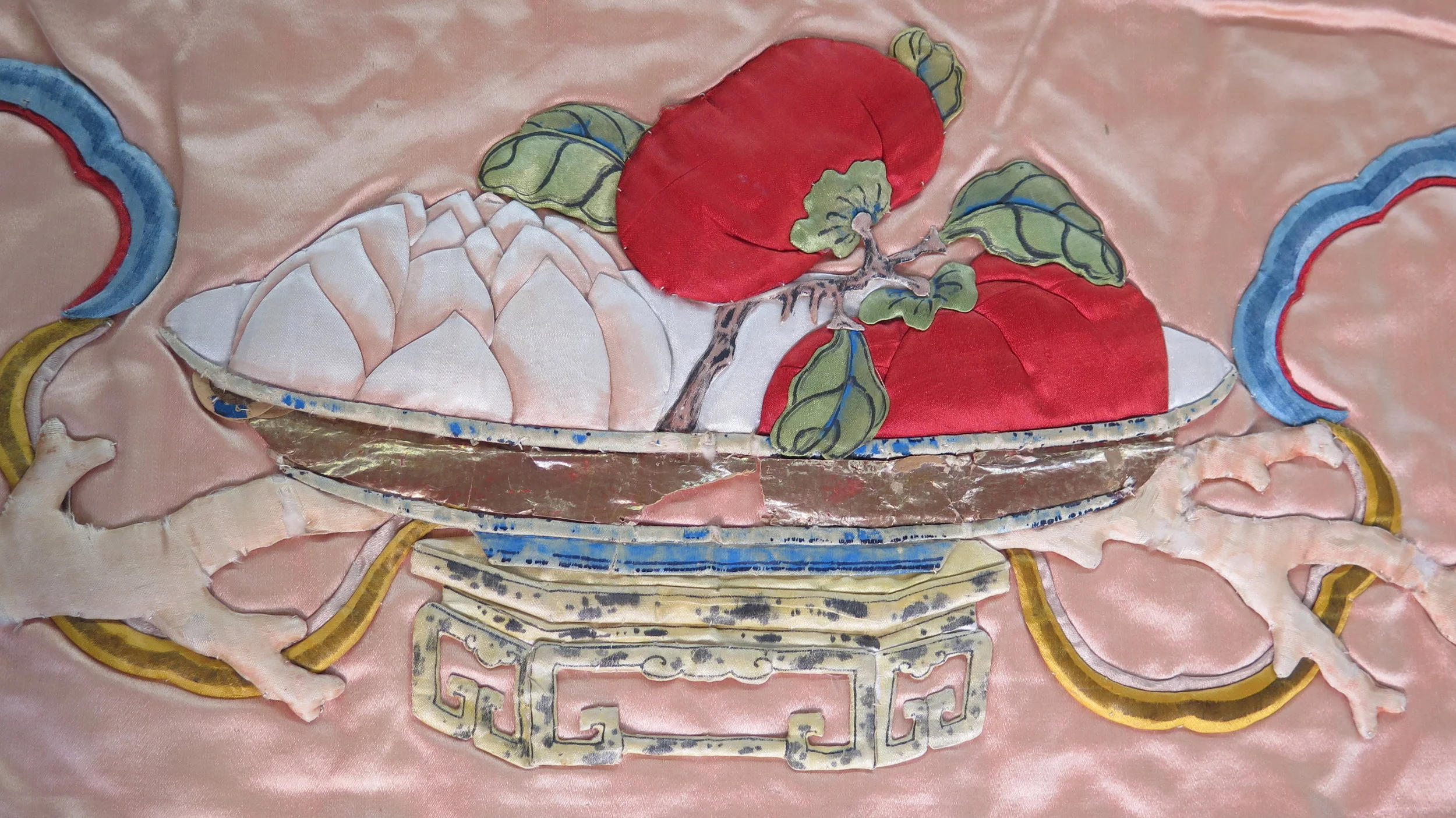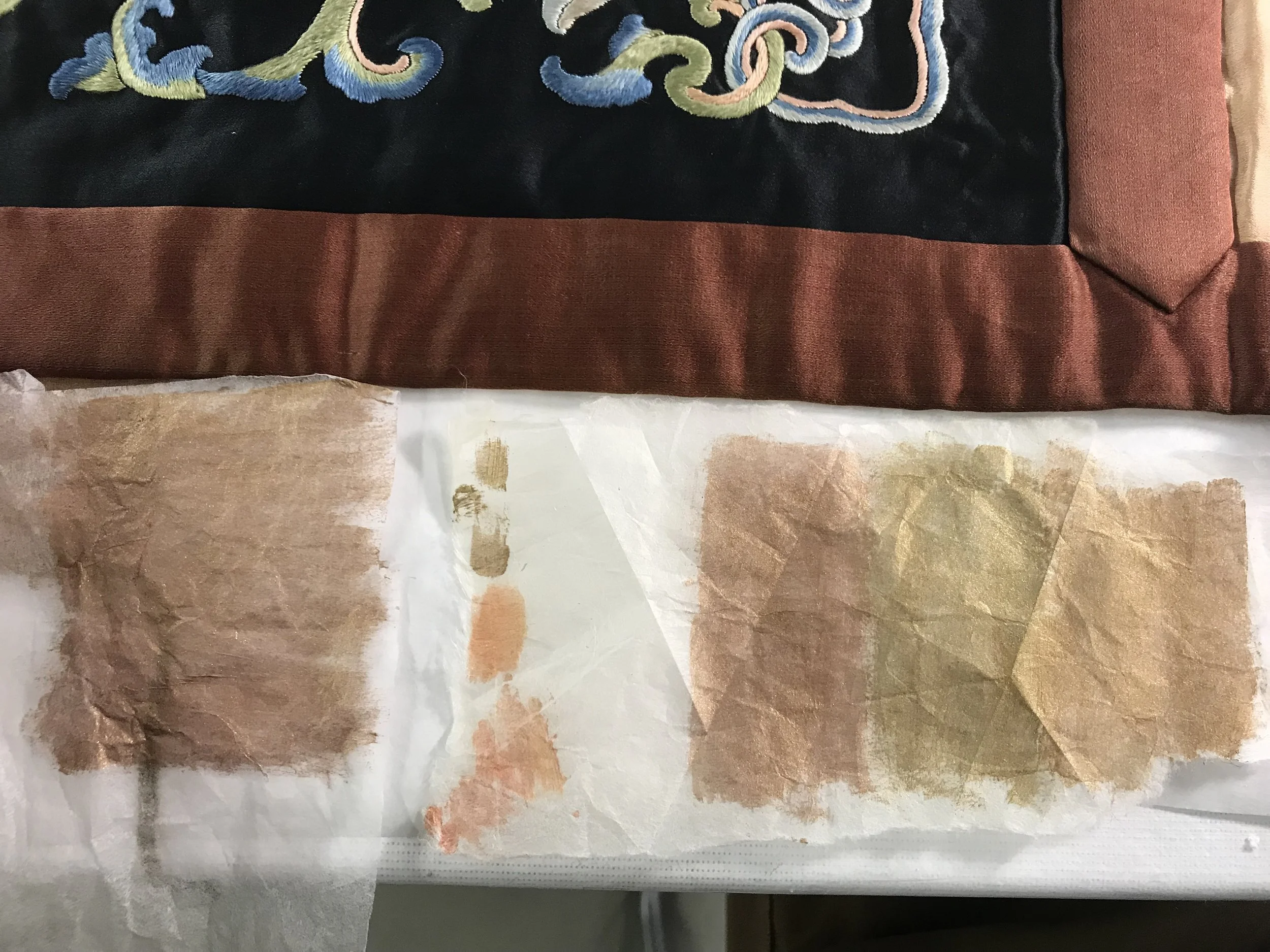Consolidation and Loss Compensation for the CHINESE WALL HANGINGS
Before treatment photograph by Kathy Tarantola
Identification number: E21173.A-F
Title/ object: wall hangings
Attribution: China
Object date: 1782 - 1850
Materials: silk and cotton
Conservator and supervisor: Mimi Leveque
Conservation Interns: Xu Yang; Jessica van Dam, preprogram conservation intern
Date: 13 – 28 June, 2018
Acquisition photograph from the PEM database
General Description
Six pairs of silk panels, lined with plain-woven cotton fabric, forming a decorative wall hanging. Each separate panel is composed of two narrow panels, united by a single fabric backing that has side tabs with ties to unite the panel pairs. Each narrow panel section is decorated with seven rectangular pieces of satin-woven silk fabric surrounded by borders of rust- brown satin-woven silk fabric. The silk satin fabric pieces are either decorated with satin-stich and couched embroidery or applique with painted silk fabric designs, padded with silk batting. The outermost panels on the right and left are subdivided within the longest rectangular sections.
From the embroidery of landscape and Taoist features, aplique of grass-dragon and abstract Chinese characters, which are all symbols of fortune, healthiness and happiness, it is suggested that these panels were supposedly from the Royal Family of Qing Dynasty.
General condition:
Lining
The lining fabric is in strong, stable condition overall. It is stained and soiled, but generally in solid condition. The side tabs are undamaged. The ties are in variable condition—some are broken, some intact.
Face
Ground Fabrics
Most of the silk satin fabrics are in stable condition with little fading or weakness.
The black satin fabric is powdery and there are numerous slits, especially near top or bottom edges where they are stressed by sewn seams.
There are small stains and black ink marks overall.
Embroidery floss
The silk embroidery floss is generally stable and has little fading.
Appliques
The cover fabrics of the appliques have become torn and weakened overall- there are many losses. The stitches that secure the appliques to the ground fabrics have broken in many places. The paint on the appliques is abraded in places.
There have been previous treatments. There are thick white cotton threads that sew some damaged appliques through to the lining, especially on the bottom sections with the fruit bowls. Being fixed to the lining creates stress as the panels are rolled or moved. Further treatment was done in 2005 (see report in database). Fine thread was used to secure the appliques.
Consolidation for the applique
Removal of the poor repair stitches
On the dragon and character appliques, all of the repair stitches that had been sewn through to the lining were removed to prevent future tearing of silk and abrasion of paint.
Consolidation
Since the panels will need to be stored rolled until new storage units are acquired at the Collection Center to store them flat, any stitches sewn through the front to the lining would put the object under stress. It was determined that the ground fabric was too fragile for the extensive stitching that would be required to reattach the appliques by sewing and it was not possible to put support fabric behind each section. As the appliques had originally been pasted to paper backings and to the fabric below then lightly sewn around the edges, Japanese wheat starch paste (Aminor paste, Masumi Corporation) was chosen to reattach the applique fabric and the cotton batting to the paper the ground fabric. The appliques were weighted until set, the weightsseparated by pieces of Hollytex and archival blotter.
Loss compensation for the gold bowl applique
Painted kozo paper with Golden acrylic paints to fill a loss of gilded paper. It was secured with wheat starch paste.







